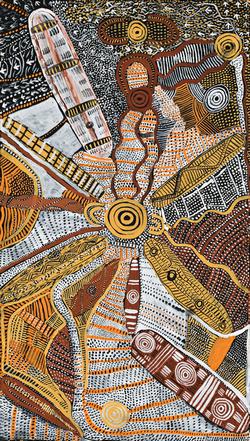Folk art

description
Folk art is a collective skill of many generations of nameless and famous self-taught artists, which, passing from father to son, retained plots, color features, ornament and other artistic features. Folk art consists of artistic techniques, decorative and ornamental elements, closely coexisting with musical folklore, religion and oral folk art. Traditional images and forms originated in ancient times in a pre-class society.
Famous folk crafts: Petrikovskaya painting, Boretskaya painting, Zhostovo painting, Tagil painting, Mezen painting on wood, Khokhloma, Kholui miniature, Fedoskino miniature, popular print.
Artistic form: wall paintings of rural houses, fences and gates, household utensils (ladles, cutting boards, spinning wheels, boxes), furniture, fabrics, panels, drawings on paper, painting forged metal trays, painting turned products (nesting dolls, Easter eggs, mushrooms, animals, salt shakers, cups), papier-mâché caskets and pincases painted with tempera, painting of animal bones and skulls, etc.
Floral ornament and animal painting are the oldest and most enduring elements of folk painting.
The compositions are characterized by clear graphics, bright colors, great imagination, dynamism and cheerfulness. The Master introduces us to the world that surrounds him.
Key ideas:
Folk art is the fundamental principle of world professional art, which determines the ethnocultural and emotional-aesthetic values of the people.
Folk painting introduces us to the worldview of a particular people and expands our knowledge of the culture of this people.
Folk art was not an end in itself for the artist. He just wanted to bring modest festivity and elegance into everyday life.
description
A Ukrainian self-taught artist, graphic artist, master of decorative painting. Basing on folk traditions, Hanna Sobachko-Shostak introduced modern sound and elements of fantasy into them. The artist became a Master of Folk Art (in 1936) and a member of the Union of Artists of the USSR in 1939. Her works were highly appreciated abroad, in particular, by Henri Matisse.
1883 - 1965
description
A bright and famous Ukrainian representative of the "people's primitive art", People's Artist of Ukraine. She is also known as an illustrator of many children's books. An iconic figure not only in modernist Ukrainian culture, but also as a master of fantasy painting, recognized far beyond the borders of the country. Her works were exhibited all over the world: in Paris and Montreal, in Prague and Sofia, in Warsaw, etc. The artist’s name is written in golden letters in the World Encyclopedia of Art. By the decision of UNESCO, 2009 was declared the year of M. Prymachenko. From the heritage of more than 900 paintings, 650 belong to the National Art Museum of Ukraine.
1909 - 1997
description
A Canadian self-taught artist of Indian origin, the founder of Woodland School (Woodland or forest school).The most original and famous artist of his country. Norval Morrisseau was the first to depict ancient myths and legends on canvases transmitted by the oral tradition of the Ojibwa tribe. The naive artist is considered the creator of the Woodland artistic style. In 1989, he became the only Canadian artist invited to participate in the Earth Wizards exhibition at the Paris Museum of Modern Art. His personal exhibitions were frequently held by the famous US galleries. The artist was awarded an honorary degree at the Royal Academy of Arts of his country and the highest civil honor - a membership in the Order of Canada, and also received the highest award of the Assembly of First Nations – The Eagle Feather. His works are bought by the most prestigious museums around the world.
1932 - 2007
